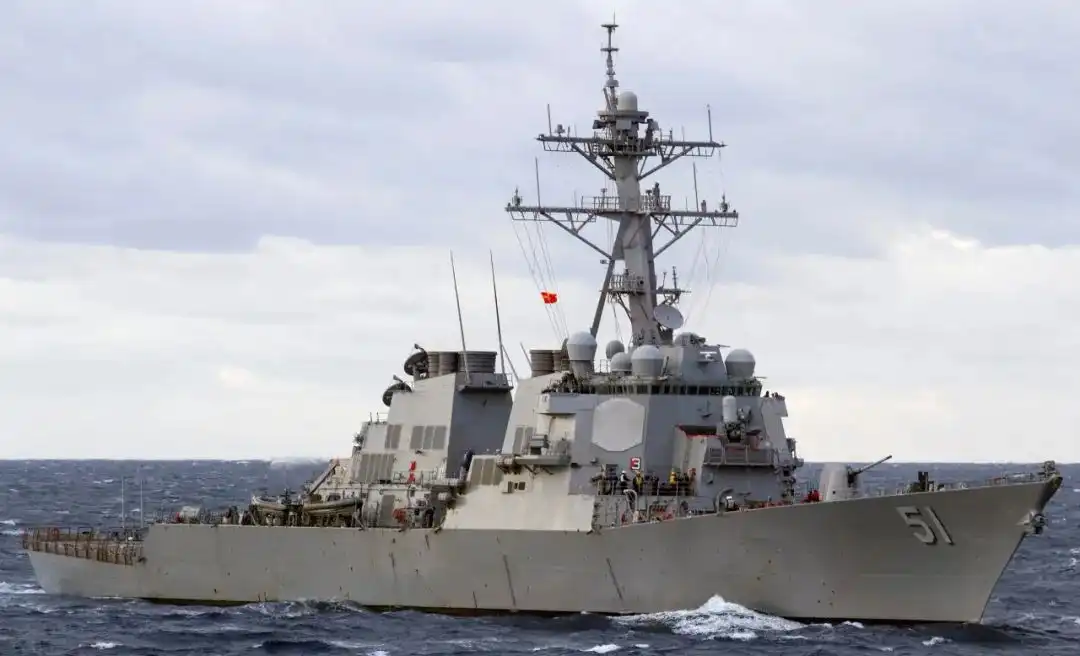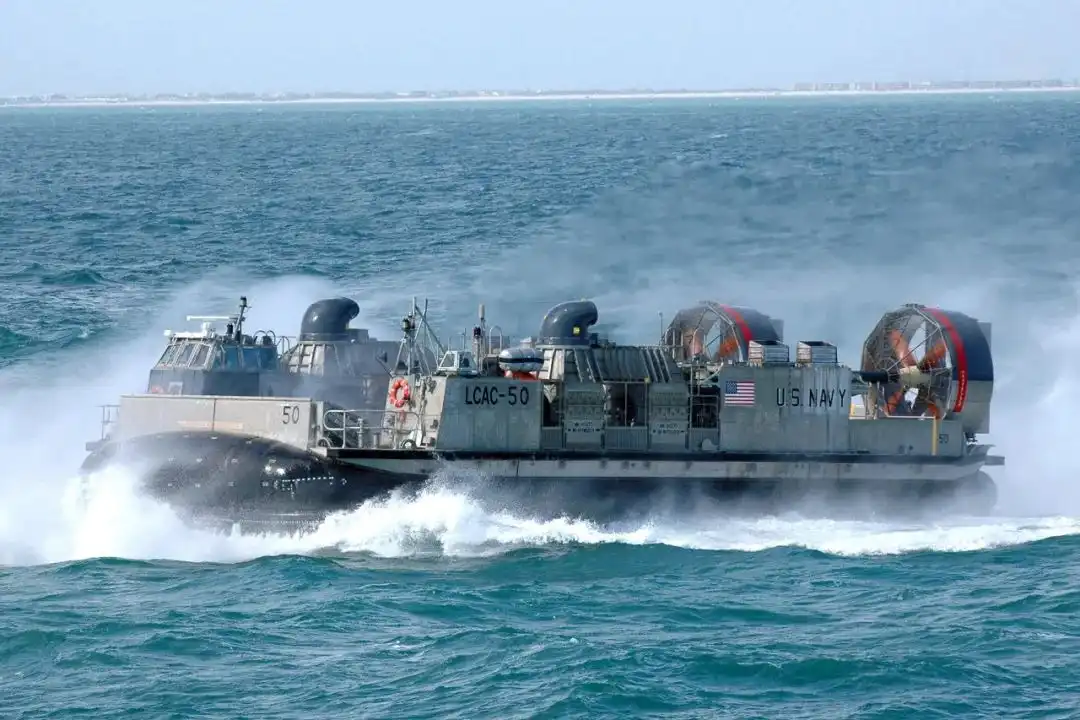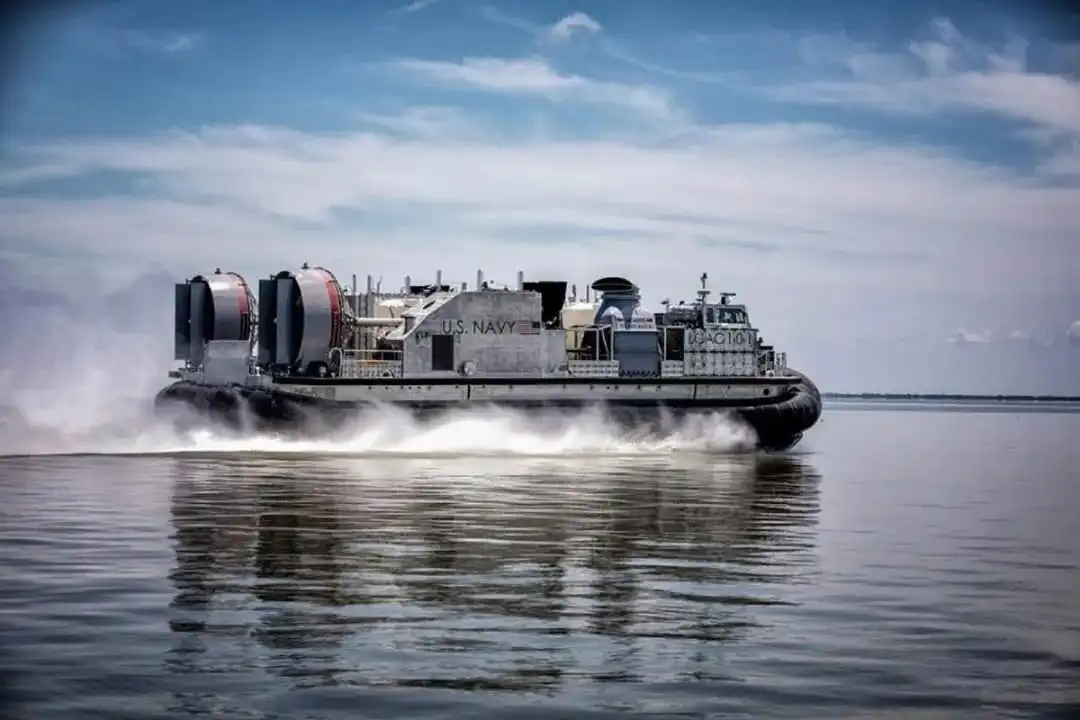The U.S. military's active LCAC air-cushion landing craft and its improvements and upgrades

In March and April 2023, the U.S. military enlisted its allies to conduct military exercises in the Western Pacific region and frequently used the LCAC air-cushion landing craft. This is a high-speed amphibious landing craft of the U.S. military and stands out among similar hovercraft in the world. In recent years, the US military has taken the initiative to adapt to future combat needs, continued to promote the technical improvement, upgrading and innovative development of LCAC air-cushion landing craft, and continued to use it in exercises. On February 15, 2023, the U.S. Navy's Arleigh Burke-class guided missile destroyer USS Decatur once sailed in the South China Sea with the LCAC landing craft air cushion assigned to the Wasp-class amphibious assault ship USS Makindo, demonstrating the unique advantages of LCAC and large amphibious surface ships in coordinated operations. On March 8, 2023, during the large-scale joint landing combat exercise between Japan and the United States "Tekken-2023", the US Marine Corps and the Japanese Maritime Defense Force conducted a landing and beach grab exercise on a LCAC hovercraft from the amphibious landing ship USS Ashland, demonstrating the United States 'commitment to alliances and partnerships in the Indo-Pacific region.
Introduction to LCAC Air Cushion Landing Craft
Equipment overview 为适应现代条件下“超地平线”登陆作战需要,美军于1984年建成第一艘LCAC气垫登陆艇,用于输送坦克、车辆和陆战队士兵。LCAC气垫登陆艇称得上是现代两栖作战的一项重大技术创新。它以JEFF型艇为原型艇发展而来。20世纪70年代开始研发,80年代开始装备部队。美海上系统司令部为LCAC开发了人员运载模块,可搭载180名人员,或145名全副武装的陆战队员,或108副担架。LCAC的任务是:全副武装的陆战队员运输、伤员撤离、战斗撤离行动。该船的操作仅需5名船员:船长、工程师、导航员、装卸长和甲板工程师。船长、工程师和导航员坐在右舷舱内,另外一个观察员使用LCAC左舷舱室顶部的气泡窗。

US Navy Arleigh Burke-class guided missile destroyer
LCAC provides the US Navy and its partners with the necessary flexibility and agility to carry out their missions. It not only has high speed and strong landing mobility, but also can play a pioneering role in over-the-horizon landing operations, and can also play an important role in non-war military operations such as humanitarian rescue, emergency medical assistance, maritime rescue and disaster relief, and security assistance. It can travel 370km at a speed of 40 knots (1.825 km / h), with a maximum speed of 70 knots. The US Navy is currently equipped with 74 LCAC air cushion landing craft. In addition, the Japanese self-Defense Forces also have six air cushion landing craft of this type. The LCAC air cushion landing craft has a payload of 60 tons, a standard displacement of 87.2 tons, a full-load displacement of 170,180 tons, a length of 26.8m, a width of 14.3m and a draught of 0.9m. The ship is equipped with four main engines. The LCAC can carry 180 heavily armed soldiers or a payload of 60 tons, can carry 1 M-1 Abramstank under overloading conditions, and is equipped with 2 boats of 12.7mm machine guns or 30mm GPU machine guns. The ship's minimum braking distance is 457.2 meters and the minimum turning radius is 1828.8 meters. The bow ramp is 8.8 meters wide and the stern ramp is 4.6 meters wide.
LCAC is a major technological innovation in modern amphibious warfare. It provides the ability to launch amphibious attacks from beyond the horizon 50 nautical miles off the coast. Its high speed complements joint helicopter attacks, and personnel and equipment can be unloaded off the beach in the safe landing area, reducing risk to combat ships and personnel. At the same time, because the attack launch point is farther and faster, it is more difficult for the enemy to determine the real landing point and time, making it more likely to achieve success in the landing operation. The LCAC's unique air-cushion propulsion method makes it less susceptible to mines and mines than other assault boats or vehicles. Due to its strong beach landing capabilities, LCAC can land on more than 80% of the world's coastline, and its effective load ratio is higher than that of Russian air-cushion landing craft. In contrast, the previously slow landing craft can only be used on 17% of the world's beaches.
Application Battle Cases 1991年海湾战争中,美海军出动20余艘LCAC气垫登陆艇实施突击登陆作战,24小时内出动55个航次,将7000名登陆兵和2400吨作战装备运上海岸。2003年伊拉克战争中,美军出动大量LCAC气垫登陆艇,在科威特成功输送作战装备和人员。2019年4月,利比亚国内动荡局势再度升级,在利比亚沿海小城Janzour海岸边突然出现两股巨浪,两艘美海军LCAC气垫登陆艇从远处高速驶来,冲上利比亚海滩,使美国驻军和使馆人员的撤离行动有条不紊,没有受到什么阻碍,也没有什么伤亡。
there are deficiencies 美军通过战争实践也认识到LCAC气垫登陆艇的美中不足,比如没有装甲防护,发动机和螺旋桨都暴露在外部,在火力密集的高强度条件下作战易损坏,被运载的装备全部露天放置,恶劣天气下不利于保养。此外,噪音太大与所引起的尘土过多也是此种气垫登陆艇的缺点,虽然沿着侧裙装有泡沫抑止器,可改善驾驶员的视野,不过在恶劣的海洋气象下行动仍有相当大的问题。另外,LCAC气垫登陆艇通用性也有小缺憾,没有简易的通用登陆艇那样的便捷性。相比而言,LCAC实在太贵,个头又大,而且装上主战坦克后就不能再携带兵员。
Improvement of LCAC air-cushion landing craft
Extend the service life of LCAC LCAC最初设计的服役年限为20年,进入21世纪后,大部分LCAC都将超过其设计服役年限而面临退役问题。因此,美海军从1994年开始实施LCAC“使用延长计划”(SLEP),在原有基础上对导航设备、通信设备等进行改进,命名为“LCAC-91型”,并于2000年2月首次试航。美海军从2000财年开始对剩余的72艘LCAC实施服务寿命延长项目,计划在2018年完成全部LCAC的延寿。每年改造2~3艘,每艘LCAC的使用寿命被延长10年,总寿命达30年。
SLEP plan improvement projects include:Improve the hull structure; equip it with a 1.8-meter deep apron and replace the original 1.2-meter apron to carry more loads; implement a "command, control, communication, computer and navigation" modification plan to transform the ship's electronic equipment from analog to digital control. In addition, LCAC's power equipment has also been modified. LCAC generally has 4 gas turbines, 2 of which are used for propulsion and 2 for lift, with a total sustained power of 11770 kilowatts. After improvement, it can increase its power and lift, increase its loading capacity, reduce fuel consumption, reduce maintenance, and weaken its sailing trajectory.
Develop the Joint Maritime Landing Attack Vehicle (JMAC) 美海军在对现役LCAC气垫登陆艇进行现代化改装延长年限的同时,曾经提出进行一项发展重型气垫登陆艇(HLCAC)的可行性研究,并作为SLEP计划的后续项目,拟在将来取代现役的LCAC气垫登陆艇,实现更新换代。HLCAC在长度和载物甲板面积上比现役的LCAC超出33%。运载量达到114吨,是LCAC的两倍,可携带2辆M1A1坦克或10辆轻型装甲车LAV。LCAC在距海岸线10海里内是充当海上后勤或海岸联勤最理想的工具,在超出10海里后HLCAC则将能更好地胜任两栖任务。但由于多处用兵、军费紧张,美军把气垫登陆艇使用寿命延长计划列为优先项目,HLCAC的研制暂时被推后。

LCAC boat under test
In order to meet the urgent needs of amphibious operations at sea, the US Navy plans to replace all LCAC air-cushion landing craft with JMAC. JMAC's speed, corrosion resistance and cargo transportation capabilities are superior to LCAC, and will become a key part and important component of the US military's "future maritime mobile base." Starting in 2015, the U.S. Navy has provided combat frontline positions with 14 amphibious transport ships for future pre-positioning troops at sea. The goal is to achieve troop mobility of 2400 people overnight, rather than having to build beachheads with mountains of supplies and use huge command structures and segmented troop transportation as it did during the Kuwait War. The appearance of JMAC and LCAC is basically similar, but their total length will reach 40.43 meters, 12.15 meters longer than LCAC. Its cargo transportation capacity will be twice that of LCAC. JMAC will still be based on air cushion technology and have the characteristics of a wheeled vehicle, but due to its much larger size, it will be more difficult to develop.
Development of a Variable Amphibious Boat (TCraft) 为克服LCAC成本相对昂贵、操作比较复杂,以及两栖运载和远程作战能力的不足,美海军研究办公室还研制开发一种高速、大载荷、低成本的TCraft,验证从海上基地向海岸运送部队和装备的方式。美海军希望具有联合高速艇(JHSV)和联合海上攻击连接器(气垫登陆艇的替代型)的功能,能装载4~10辆M1A1艾布拉姆斯坦克,将它们通过碎浪区运送到海上。
TCraft is capable of long-distance transportation from a sea base and then changes its model to unload cargo. It can cross sandbars and mud to the coast in shallow water mode, then transform into a fully amphibious mode, and finally transport the load to land. The load of TCraft increases by 4 to 10 times and the speed is greater than 40 knots. The TCraft project solves some technical challenges, such as the transformation of propulsion systems from the water to the water phase, changeable and recyclable aprons, new high-strength, lightweight, and durable materials, active wave-riding control systems, operator integrated systems, transfer of cargo at offshore bases, etc.
Develop a new generation of ship-shore connectors (SSC) 随着美海军提出“超地平线”两栖登陆作战理念,要达到在视距外威胁敌方的作战目的,LCAC气垫登陆艇性能就显得落后了,代之而起的是由德事隆系统公司研发的新型气垫登陆艇SSC,不仅继承了LCAC的很多设计优点,而且进一步创新突破。它的载货空间达到了148平方米,并且设计有封闭人员运输舱,SSC一次性可以搭载180名士兵,载荷量高达74吨,甚至完全可以携带M1A1艾布拉姆斯主战坦克。装备4台罗尔斯罗伊斯MT7燃气轮机的SSC动力强劲,甚至能够在恶劣海况中稳定航行。据德事隆公司的介绍,与LCAC相比,SSC的通用性更为强大,甚至能在全球80%以上的海岸线进行登陆。
Different from the previous design characteristics of the U.S. Navy, which generally pursued new equipment, this "shore-to-ship connector" SSC is very pragmatic, focusing its research and development on ease of use and maintainability, while comprehensively reducing costs, Ensure the feasibility of mass production. According to a plan previously announced by the US Navy's Maritime Systems Command, the US Navy will spend US$386 million to purchase 15 SSCs. It can be said that as this batch of new equipment is gradually put in place, the US Navy will be able to further exert its tactical surprise advantage while reducing casualties when performing amphibious combat missions in the future.

LCAC-101 boat under test
The SSC project is actually an upgraded alternative to the existing LCAC and a successor to LCAC. Although LCAC accepted SLEP, it also began to exceed or approach its useful life. SSC is also a hovercraft. Like LCAC, its mission is to operate on amphibious ships and mobile landing platforms to transport ground attack troops ashore from out of sight to support sea-to-land combat manoeuvres. SSC provides higher performance for today and future tasks, improving ship availability and reducing overall costs through improvements. In August 2010, the U.S. Navy issued a proposal request for a contract for the design and construction of 72 SSC ships. The total contract value is as high as US$4 billion. Two teams responded to the Navy's request, one composed of Marinette Maritime, Boeing and Griffin Hovercraft, and the other composed of Textron Sea-Land Systems, Alcoa Defense and L-3 Communications. SSC's initial test and training machine is called the LCAC100.
Compared to the two horizontally mounted engines on each side of the LCAC, there are two longitudinally mounted engines on each side of the SSC for increased power. The LCAC has 2 lift fans on each side, using aluminum lift fans and bow thruster casings; the SSC has only 1 lift fan on each side, using composite lift fans and bow thruster casings. The number of gearboxes in SSC has been reduced from 8 in LCAC to 2. This reduces the complexity and maintenance costs of the powertrain gearbox and improves its reliability. The LCAC is equipped with a 400Hz power distribution system commonly used on aircraft; the SSC is equipped with a 60Hz power distribution system more commonly found on ships, allowing for greater component options and lower component costs. LCAC's propeller uses steel shafts and aluminum alloy shrouds;SSC's propeller shafts and shrouds are all made of composite materials. The use of composite materials will reduce maintenance costs for these components.
Conclusion
Air-cushion landing craft is an important equipment used by the United States to connect maritime and onshore operations, and it has undoubtedly attracted attention. In June 2022, the U.S. Navy has received its first new-generation SSC, which will enhance the U.S. military's coordinated combat capabilities at sea and land and strengthen its actual combat capabilities.
copyright notice:This article was published in the 4th issue of Military Digest magazine in 2024. The author:Zhuo Fan, Chen Xiaoxu, If you need to reprint it, please be sure to indicate "Transferred from Military Digest".
attention to our
